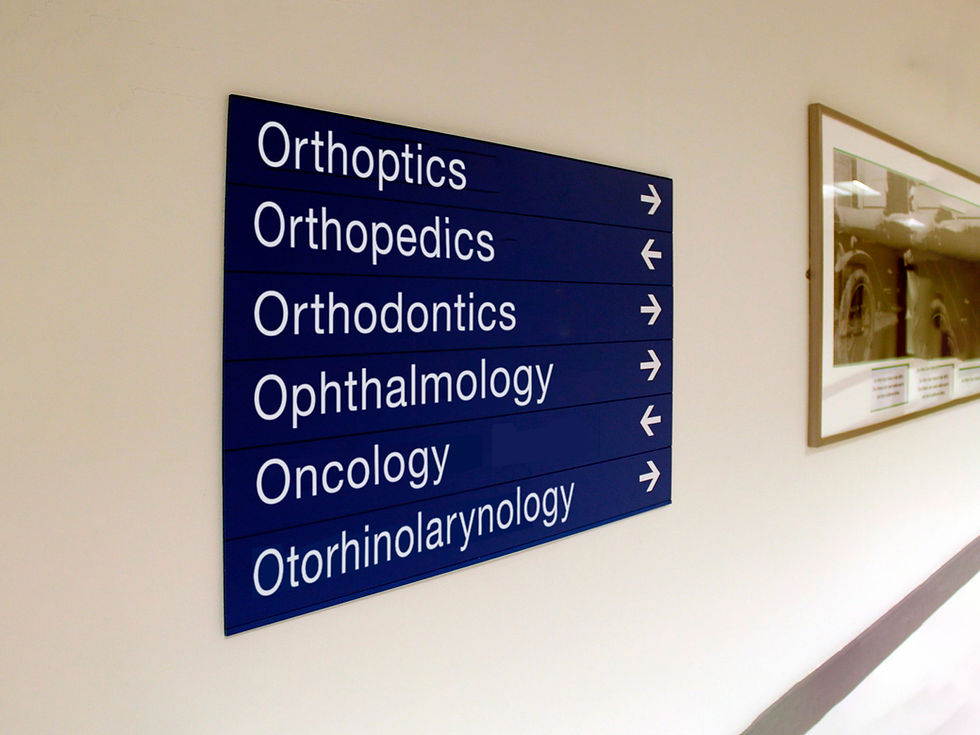Wayfinding and the Future: Integrated, Intelligent, Effective, and Human
- Marc Jenkins
- Sep 12
- 2 min read
Updated: Sep 13

Recall the well-known scene from Alice in Wonderland, where Alice asks the Cheshire Cat which way she ought to go. The Cat asks, “Where do you want to go?” When Alice replies, “I don’t know,” the Cat responds, “Then it doesn’t matter which way you go.”
But when you do know your destination, how you get there is important. It matters whether you navigate independently, seek help, or risk running late because you got lost. Effective wayfinding enables users to reach their chosen location as intuitively and effortlessly as possible. Achieving this requires a deep understanding of human behaviour and the factors that influence how we perceive physical spaces, ensuring an optimal experience—especially in unfamiliar and complex environments. Digital tools add even more value by enhancing service journeys across all relevant platforms.
Digital wayfinding must thoughtfully integrate with the physical environment to create a consistent, logical user experience. Danish national health authorities increasingly acknowledge the value of harnessing the synergy between physical and digital facilities: “The aim is that citizens should experience the healthcare system as one coherent network—digitally integrated yet experienced as human.”
Key factors enhancing the wayfinding experience include customised information, seamless integration, real-time updates and feedback, adaptability to change, and activating senses like sound and touch—all tailored to specific contexts.
Maximum effectiveness and user satisfaction come from interconnecting digital and analogue solutions. Physical signage still plays a key role through its permanence. Both passive (physical) and active (digital) wayfinding will likely remain indispensable, especially indoors. Combining traditional signage with the responsiveness of digital systems can yield synergistic benefits.
A user-centred wayfinding strategy blends digital and analogue, dynamic and static components to meet diverse needs and abilities, effectively bridging the physical and digital realms.
Challenges remain—like lack of standardisation, different typologies, and privacy concerns (such as GDPR)—but these can be addressed through open innovation, potentially supported by major players like the European Union. To foster trust in AI-based wayfinding, ethical, understandable, and human-centric decision-making is essential.
This approach could lead to AI-driven wayfinding that anticipates user needs, requiring less attention and offering only the most relevant information.
However, unresolved ethical and practical issues with AI must still be carefully managed—especially in healthcare, where trust and safety are paramount. Stakeholders need to ensure that AI is developed ethically, securely, and with meaningful benefits. The possibilities for enhancing healthcare wayfinding experiences with intelligent technology are immense.
We all share the responsibility to avoid leaving users—patients, travellers, visitors—confused or lost. Striking the right balance between tried-and-true components (e.g., static and dynamic signage, clear sightlines, and affordances grounded in insights on user behaviour) and the latest technological solutions (apps, immersive technologies) fosters coherence and empowerment.
An effective wayfinding system anticipates and responds to every new user entering an unfamiliar space, offering guidance that caters to varied intuitive navigation preferences. Its design should rest on robust evidence about how people react to complex environments, how to mitigate this complexity, and how to translate these insights into strategies that enable seamless, intuitive journeys.
Good wayfinding allows users to invest minimal effort in following instructions, freeing them to focus on the real purpose of their journey.
Studio Marc is an Associate Partner of Humanics Collective

